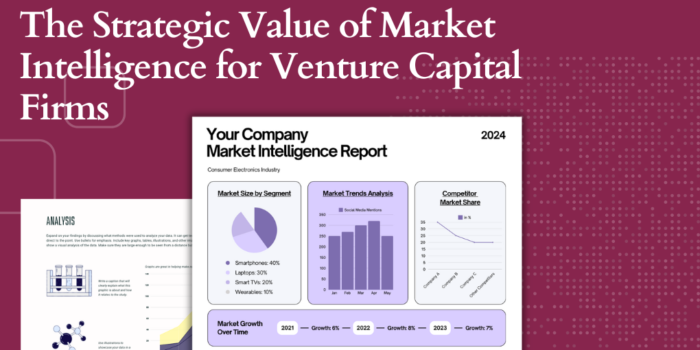Market research has traditionally relied on retrospective analysis to understand consumer behavior and industry dynamics. However, with rapid technological advancements and increasing data availability, predictive market research has emerged as a critical tool for businesses seeking to anticipate market trends, optimize strategies, and maintain a competitive edge. This paper explores the theoretical underpinnings of predictive market research, its methodological advancements, and its implications for strategic decision-making. By integrating statistical modeling, machine learning, and historical data analysis, predictive research offers businesses the ability to forecast demand fluctuations, refine pricing strategies, and mitigate market uncertainties.
Introduction
Market research has long been an essential component of business intelligence, aiding organizations in understanding consumer preferences, competitive landscapes, and industry trends. Traditional research methodologies, such as surveys, focus groups, and historical data analysis, provide valuable insights but are inherently reactive. The emergence of predictive analytics has shifted the focus from descriptive insights to forward-looking strategies, allowing businesses to make data-driven decisions with greater confidence.
The Evolution of Predictive Market Research
Predictive market research leverages advanced data science techniques to analyze vast and complex datasets. This approach enables organizations to identify patterns, correlations, and future trends with increased accuracy. Key drivers behind the adoption of predictive analytics in market research include:
- Big Data and Computational Advancements The availability of large-scale structured and unstructured data has paved the way for more robust and accurate market predictions. Advanced computing technologies allow for the real-time processing of diverse datasets, ranging from consumer transactions to social media sentiment analysis.
- Machine Learning and Artificial Intelligence Predictive models utilize machine learning algorithms to refine forecasts continuously. Techniques such as regression analysis, clustering, and deep learning enhance the ability to anticipate market shifts, improving strategic planning and resource allocation.
- Behavioral and Sentiment Analysis With the rise of digital interactions, consumer behavior data has become more accessible. Predictive market research integrates behavioral analytics and sentiment tracking to gauge shifting consumer interests, offering organizations actionable insights into evolving market dynamics.
Applications of Predictive Market Research
The practical applications of predictive market research extend across various industries and business functions. Some of the key areas where predictive insights drive decision-making include:
- Demand Forecasting: Businesses can anticipate fluctuations in consumer demand, allowing for more efficient inventory management and resource allocation.
- Pricing Strategy Optimization: Predictive modeling enables dynamic pricing mechanisms based on factors such as demand elasticity, competitor pricing, and seasonal trends.
- Market Entry Strategies: Organizations can evaluate potential market opportunities by assessing historical success factors and emerging trends within specific industries.
- Customer Retention and Personalization: By analyzing past consumer behaviors, businesses can predict customer attrition rates and implement targeted marketing strategies to enhance retention.
How Organizations Can Get Started
For organizations looking to integrate predictive market research into their decision-making processes, a structured approach is essential. The key steps include:
- Data Collection and Integration Companies must first ensure they have access to high-quality, relevant data. This involves aggregating internal datasets (e.g., sales data, customer interactions) and external sources (e.g., industry reports, economic indicators) into a centralized platform.
- Building Analytical Capabilities Investing in data analytics tools and hiring skilled professionals with expertise in predictive modeling, machine learning, and statistical analysis is crucial for deriving meaningful insights.
- Developing Predictive Models Organizations should start with pilot projects to test predictive models on smaller datasets before scaling. This helps refine the accuracy of forecasts and identify key performance metrics.
- Integration with Business Strategy Predictive insights should be embedded into strategic planning processes, allowing decision-makers to act on data-driven recommendations for market positioning, product development, and competitive intelligence.
- Continuous Monitoring and Refinement Predictive models should be continuously monitored and updated based on real-time data to ensure ongoing relevance and accuracy in a dynamic market environment.
How Knometrix Can Help

Knometrix specializes in market research and advisory services, helping businesses navigate the complexities of predictive analytics. Through a combination of expert-driven insights, advanced data modeling, and industry-specific knowledge, Knometrix enables organizations to:
- Identify high-value market opportunities using predictive frameworks.
- Implement data-driven pricing, demand forecasting, and consumer behavior analysis.
- Develop tailored predictive models aligned with industry trends and business objectives.
- Gain a competitive advantage by integrating predictive research into strategic decision-making processes.
By leveraging Knometrix’s expertise, organizations can transition from reactive to proactive market research, ensuring they remain ahead in an increasingly data-driven world.
Conclusion
The integration of predictive analytics into market research signifies a shift from reactive decision-making to proactive strategy formulation. As technological advancements continue to enhance predictive capabilities, organizations that embrace data-driven forecasting will gain a substantial competitive advantage. Future research should focus on refining predictive methodologies and exploring interdisciplinary applications to further strengthen market intelligence frameworks.
Connect with us to us to know more.







 Market Research
Market Research Consumer Research
Consumer Research Industry Research
Industry Research Market Entry Strategy
Market Entry Strategy Feasibility Studies
Feasibility Studies Product Research
Product Research User Research
User Research Automobile & Mobility
Automobile & Mobility Banking and Finance
Banking and Finance Consumer Products & FMCG
Consumer Products & FMCG Ecommerce & Retail
Ecommerce & Retail Industry & Manufacturing
Industry & Manufacturing Government & Public Sector
Government & Public Sector Industry Associations
Industry Associations Technology & Software
Technology & Software Venture Capital & PE
Venture Capital & PE Consulting & Advisory
Consulting & Advisory India Entry Market Research
India Entry Market Research Innovation Consulting
Innovation Consulting KX Market Radar
KX Market Radar Business Model Development
Business Model Development Gen Z Navigator
Gen Z Navigator